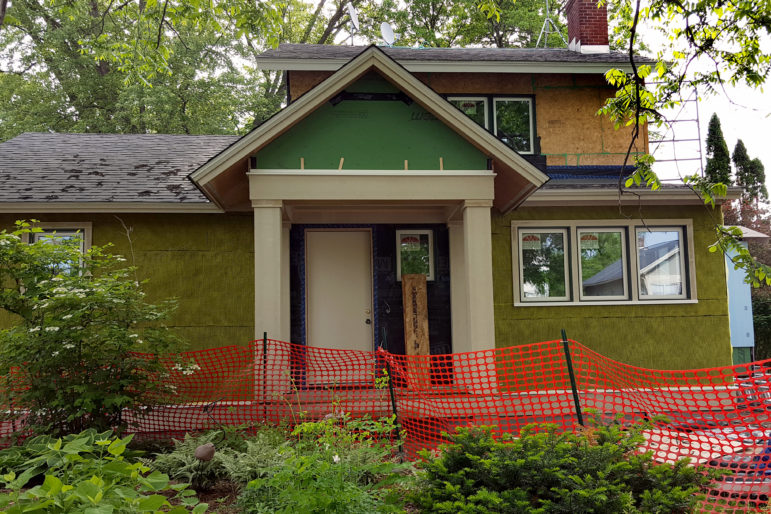
If you’re like me, nothing beats the charm of an older home. Whether it’s a darkened oak built-in buffet or classic crown molding in the living room, these characteristics are irreplicable in new homes. Then again, compared to new construction, older houses tend to be drafty, have older fossil fuel-based heating (and often no cooling system), and include fun quirks that add to your utility bill and energy footprint. During my days as a residential energy auditor, we’d look at older houses and recommend adding attic and wall insulation and upgrading the heating system, but that’s about all we could suggest.
The good news is that in the past few years, new technologies have come onto the market that allow our beloved old homes to begin to go beyond basic retrofits. Replacing natural gas wherever possible with clean electricity is a key piece of the puzzle. As wind and solar markets grow, Minnesota’s electricity is getting cleaner and it’s becoming increasingly beneficial to power more of our economy with electricity. Just because you live in an old house doesn’t mean you can’t move toward a carbon-free, electric economy.
One great example is Fresh Energy’s own science policy director J. Drake Hamilton. J. and her husband (the Science Museum of Minnesota’s Patrick Hamilton) recently installed an air-source heat pump water heater in their home. This technology uses electricity to extract heat from the air to heat domestic hot water—basically working like a refrigerator in reverse. These new water heaters can be three times as efficient, offering cheaper lifetime costs than high-efficiency natural gas water heaters and can be fueled by carbon-free wind power provided by your utility. That piece of mind can make your hot shower in the morning all the more refreshing!
Gary and Claire Nelson, friends of Fresh Energy, are taking this a step further and completely retrofitting their entire house. Their goal is to take their house completely off fossil fuels and run it entirely on electricity. The house will be heated and cooled by a cold climate air-source heat pump, which is about twice as efficient as electric resistance heating. This technology works the same as J.’s heat pump water heater, but impressively can extract heat from outdoor air even when the air is extremely cold. Their model is rated to work down to -13° F so no back-up electric heaters will be necessary. It also works in reverse for very efficient cooling in the summer.
Cost effectively heating their house using an air-source heat pump is possible during a Minnesota winter because of the Nelson home’s super-insulated and air-tight building envelope. Gary and Claire are using state-of-the-art technologies to ensure that on the coldest nights, almost no heat is escaping their home. The walls at the Nelson house are approximately 50 percent more insulated than the Minnesota energy code requires and the windows are three times more resistant to heat flow than the minimum requirements.
These two houses exemplify how emerging technology can bring a beautiful old home into the all-electric economy. Beyond buildings, we will imagine a future where the vast majority of our economy is run entirely on clean energy. As these technologies continue to evolve and move down the cost curve, Fresh Energy sees heat pump water and space heating as essential pieces of a carbon-free economy.
